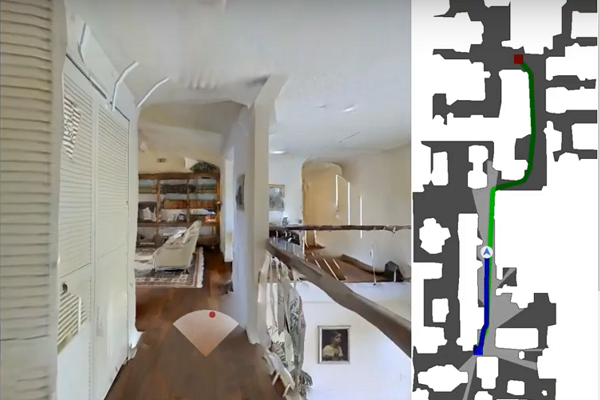Facebook Makes New 99.99% AI Navigation Model Open Source
Facebook has created a set of artificial intelligence models that can navigate an indoor environment with 99.99% accuracy. The social media giant released the models as an open-source tool that could be used to enhance smart homes and make voice assistants more useful.
Navigating Rooms by Camera, Compass, and GPS
AI-powered robots and other devices typically rely on uploaded maps and precise instructions to get around. That’s how automated factories usually work, but home layouts aren’t usually static and perfectly clear. It’s why Roombas and other automatic cleaners navigate by gently bumping into things and rotating to find a new path. To progress beyond this point, an AI needs to be able to build an internal map of a room using onboard sensors, such as a compass, a camera, and a GPS. Facebook created the Habitat Challenge last year to encourage the creation of such a platform. The new model achieves that goal with 99.9% accuracy, beating the 92% accuracy of the previous top contender. That 7.9% sounds small but crucial. Simply imagine stairs in that tiny blank spot.
“An unfortunate fact about maps is that they become outdated the moment they are created. Most real-world environments evolve — buildings and structures change, objects are moved around, and people and pets are in constant flux,” Facebook researchers Abhishek Kadian and Erik Wijmans wrote in a blog post about the new models. “By learning to navigate without a map, [devices trained on the new model] will accelerate the creation of new AI applications for the physical world.”
Smart Rooms, Smart Robots
An AI that can see and grasp what is in a room and where would be immensely useful, even when attached to an immobile device. A smart display or any voice assistant with access to cameras could use this model to answer questions about what’s in a room. For instance, it could tell if a briefcase was left on a table or report if a pet food bowl is empty. The growing ambient computing in a smart home could combine that navigation technology with other sensors and software to do everything from reminding someone if they leave the milk out, to marking the location of items in a crowded garage even after they’ve been moved around.
The biggest potential use case of perfect navigation software is with mobile robots. Samsung’s Ballie robot was the talk of CES this year precisely because it can navigate a home better than most other available devices. Amazon is said to be working on an Alexa-powered robot as well. Once incorporated into more specialized bodies, the voice AI combined with the navigation software would be able to understand a command to clean up a mess in the living room and water a plant in the bedroom without any other details and actually carry it out successfully.
Follow @voicebotai Follow @erichschwartz
Samsung Ballie is a Social Robot That Might Actually Be Useful and Scalable









